Erinyes (Furies)
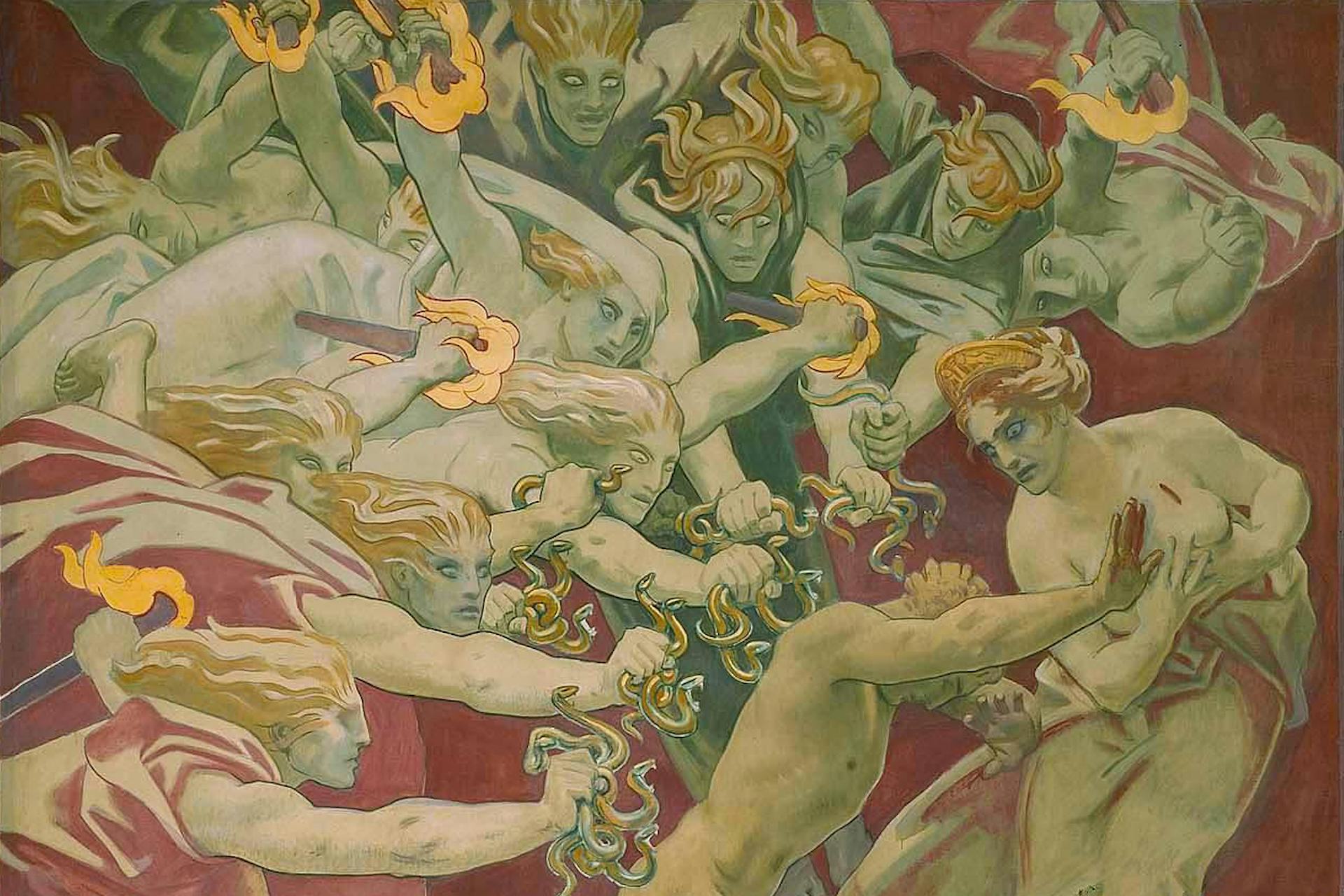
Orestes Pursued by the Furies by John Singer Sargent (1921).
Museum of Fine Arts BostonPublic DomainOverview
The Erinyes, also known as the “Furies” or “Eumenides,” were the goddesses responsible for punishing wrongdoing and blood-guilt. They appeared above all when someone carried out a crime against a family member, but they were also invoked in cases of nonfamilial homicide, impiety, and perjury.
Born from the blood of Uranus (the primordial god of the sky), the Erinyes were often thought to dwell in the Underworld, along with Hades and his bride Persephone. Their number was originally indeterminate, but later sources listed three Erinyes: Tisiphone, Alecto, and Megaera.
The Erinyes were much feared in the ancient world. Once they caught the scent of a particularly horrific crime, they were notoriously difficult to placate. In one famous myth, the Erinyes pursued Orestes after he had killed his own mother, Clytemnestra, tormenting him endlessly until he was finally purified with the help of Apollo and Athena.
Etymology
The etymology of “Erinyes” (Ἐρινύες, translit. Erinýes) is uncertain.[1] The name itself is very ancient: it was already attested in the Mycenaean period (ca. 1600–1100 BCE), where it was written in the Linear B script as e-ri-nu.[2]
In antiquity, the Greeks tended to derive the Erinyes’ name from the verb ὀρίνω (orínō, “to stir up, excite”) or the noun ἔρις (éris, “strife”). Modern scholars are less certain of the name’s origin. Some have suggested an Indo-European derivation from *eri-snh₁-u-, meaning “one who provokes struggle,” while others believe that the name is pre-Greek.[3]
It was only at a later period that the Erinyes acquired individual names: Tisiphone (Greek Τισιφόνη, translit. Tisiphónē), Alecto (Greek Ἀληκτώ, translit. Alēktṓ; sometimes spelled Allecto), and Megaera (Greek Μέγαιρα, translit. Mégaira).[4] The etymologies of these names are much more straightforward and correspond to the vengeful roles of the goddesses: Tisiphone translates to “avenger of murder,” Alecto to “implacable one,” and Megaera to “envious one.”
Pronunciation
English
Greek
Erinys, Erinyes Ἐρινύς (translit. Erinýs), Ἐρινύες (translit. Erinýes) Phonetic
IPA
[ih-RIN-is, ih-RIN-ee-eez] /ɪˈrɪn ɪs, ɪˈrɪn iˌiz/
Alternate Names, Titles, and Epithets
The Erinyes were sometimes referred to by various euphemisms, apparently meant to neutralize their dreaded infernal powers. The most famous of these was “Eumenides” (Greek Εὐμενίδες, translit. Eumenídes), which translates to something like “well-meaning ones.”[5] But the Erinyes had other euphemistic names or epithets in the ancient Greek world, including “Semnae” (Greek Σεμναί, translit. Semnaí), meaning “august ones,” a title used for the goddesses in Athens,[6] and “Ablabiae” (Greek Ἀβλάβιαι, translit. Ablábiai), meaning “harmless ones,” a title used in Erythrae.[7]
Though these euphemisms were common by the fifth century BCE, it is unclear whether the Eumenides, Semnae, and Ablabiae were always identical with the Erinyes, or whether they were originally independent goddesses that only later became identified with the dreaded Erinyes.
The Erinyes’ Roman equivalents were called “Furiae” (“frenzied ones,” from which we get the name “Furies”) or “Dirae” (“ominous ones”).
Attributes
Functions and Powers
Though their origins are obscure, the Erinyes were regarded as extremely ancient divinities. They were certainly older than the Olympians and thus represented an earlier world order.[8]
The Erinyes’ function was to punish and avenge crimes, including disobedience towards parents, disrespect for elders, perjury, violation of the laws of hospitality, mistreatment of suppliants, impiety towards the gods, and, above all, murder. As the Erinyes were primarily associated with family crimes and blood-guilt, they exacted the most vicious punishments of all upon those who had murdered a family member (especially an elder family member like a mother or father).
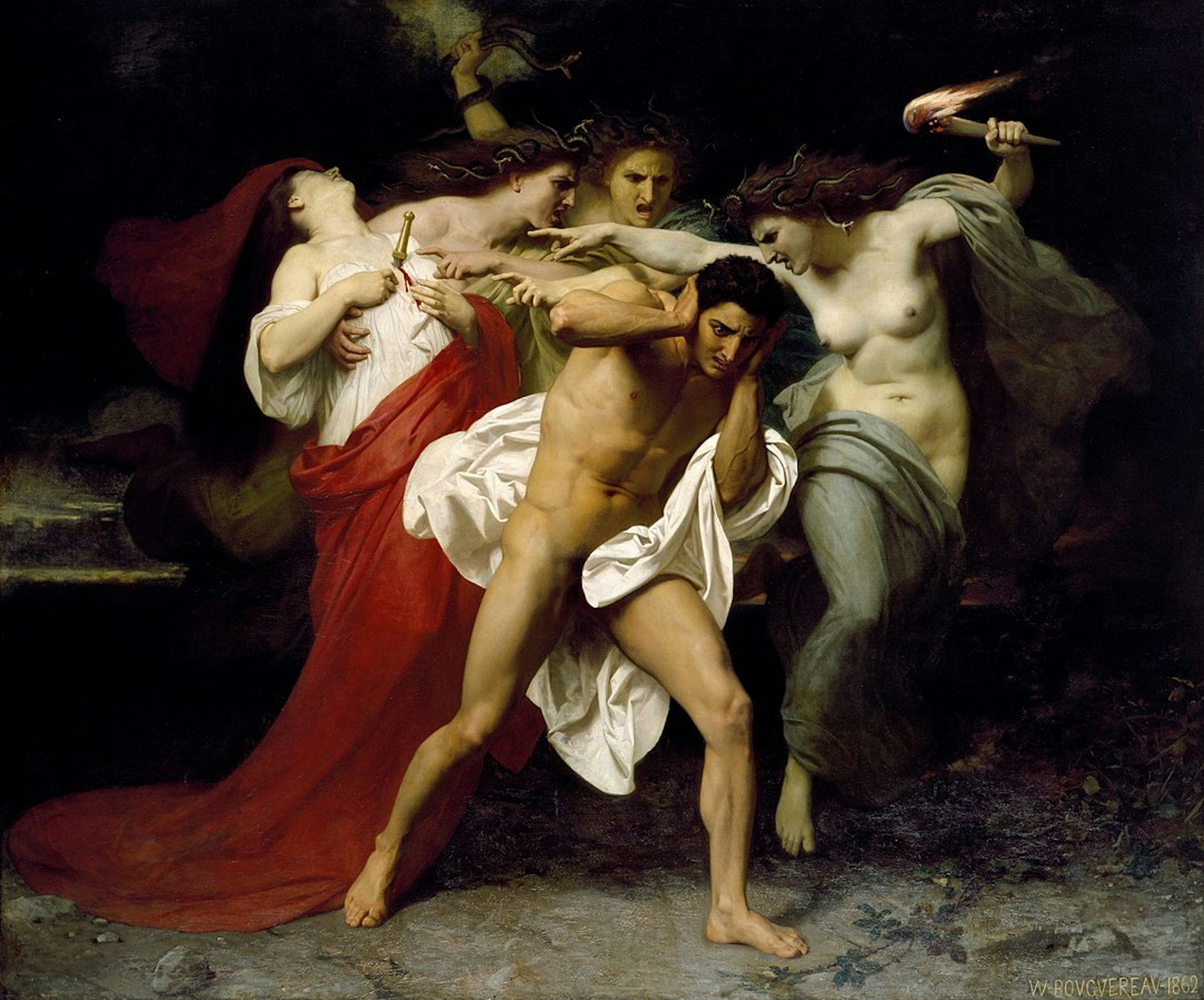
Orestes Pursued by the Furies by William-Adolphe Bouguereau (1862). Chrysler Museum, Norfolk, VA.
Google Arts and CulturePublic DomainThe Erinyes had various other functions as well. They carried out curses, especially those of a parent, and also personified those curses;[9] they were invoked as guarantors of oaths;[10] they prevented humans from obtaining too much knowledge about the future;[11] and they punished sinners in the Underworld.[12] In fact, Heraclitus, an early Greek philosopher, wrote that the Erinyes had control over all cosmic justice.[13]
The Erinyes were much feared in antiquity due to their terrifying powers. They were able to take away a person’s reason, for example, and bring about blindness or madness.[14] Some sources claim that they also had the power to destroy or bestow fertility of any kind.[15]
Characteristics, Symbols, and Iconography
The Erinyes were often seen as Underworld goddesses and were thus said to live in the Underworld.[16] Eventually, the number of the Erinyes became standardized at three—Tisiphone, Alecto, and Megaera—but originally there may have been more.[17] In Athens, it is possible that only two were worshipped.[18]
The Erinyes were represented as nightmarish creatures. Aeschylus, for example, portrayed them as
wingless in appearance, black, altogether disgusting; they snore with repulsive breaths, they drip from their eyes hateful drops; their attire is not fit to bring either before the statues of the gods or into the homes of men.[19]
The Erinyes were usually regarded as virgin goddesses,[20] but some local variants (such as the Arcadian Demeter Erinys) had divine consorts.
In ancient art, the Erinyes’ attributes included wings, snake hair, hunting boots, and a short chiton (a kind of tunic). They were often depicted punishing the dead in the Underworld. Sometimes they carried torches or whips, their most recognizable symbols.[21]
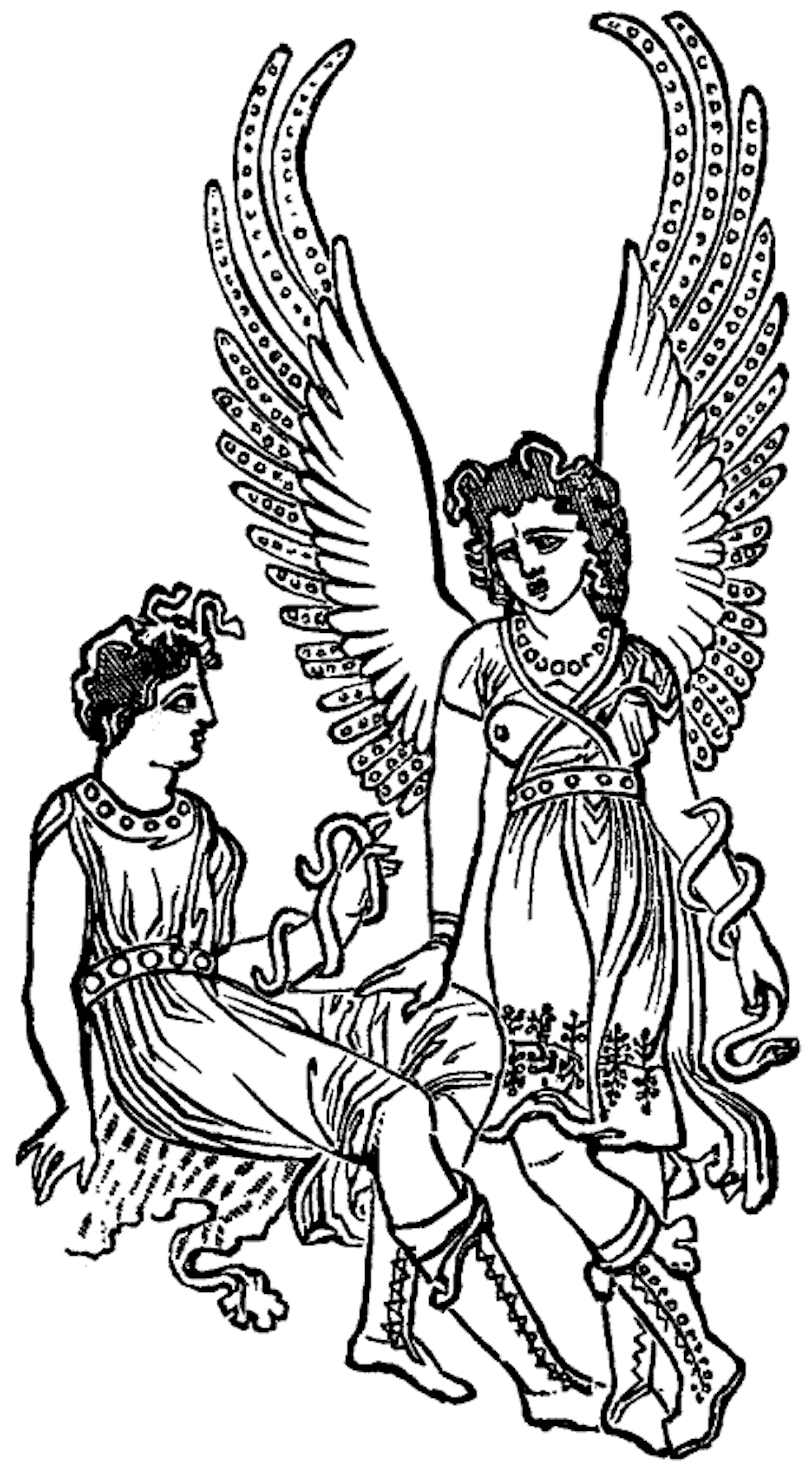
19th century illustration of two Erinyes, after 4th century BCE Apulian vase painting.
Wikimedia CommonsPublic DomainFamily
Family Tree
Mythology
Alcmaeon
Alcmaeon was the son of Amphiaraus, one of the heroes who took part in the doomed war of the Seven against Thebes. The conflict broke out when Oedipus’ son Polyneices attempted to reclaim the throne of Thebes after being banished by his brother Eteocles. Initially, Amphiaraus did not want to take part in the ill-omened expedition, but his wife Eriphyle convinced him to go (after being bribed by Polyneices). When Amphiaraus was killed in the war, his son Alcmaeon blamed Eriphyle for his death and killed her in revenge.
For the sin of matricide, the Erinyes hounded Alcmaeon and drove him mad. Alcmaeon fled, first to his grandfather Oicles in Arcadia, then to Phegeus in Psophis. But despite his best efforts, Alcmaeon could not be purified of his crime.
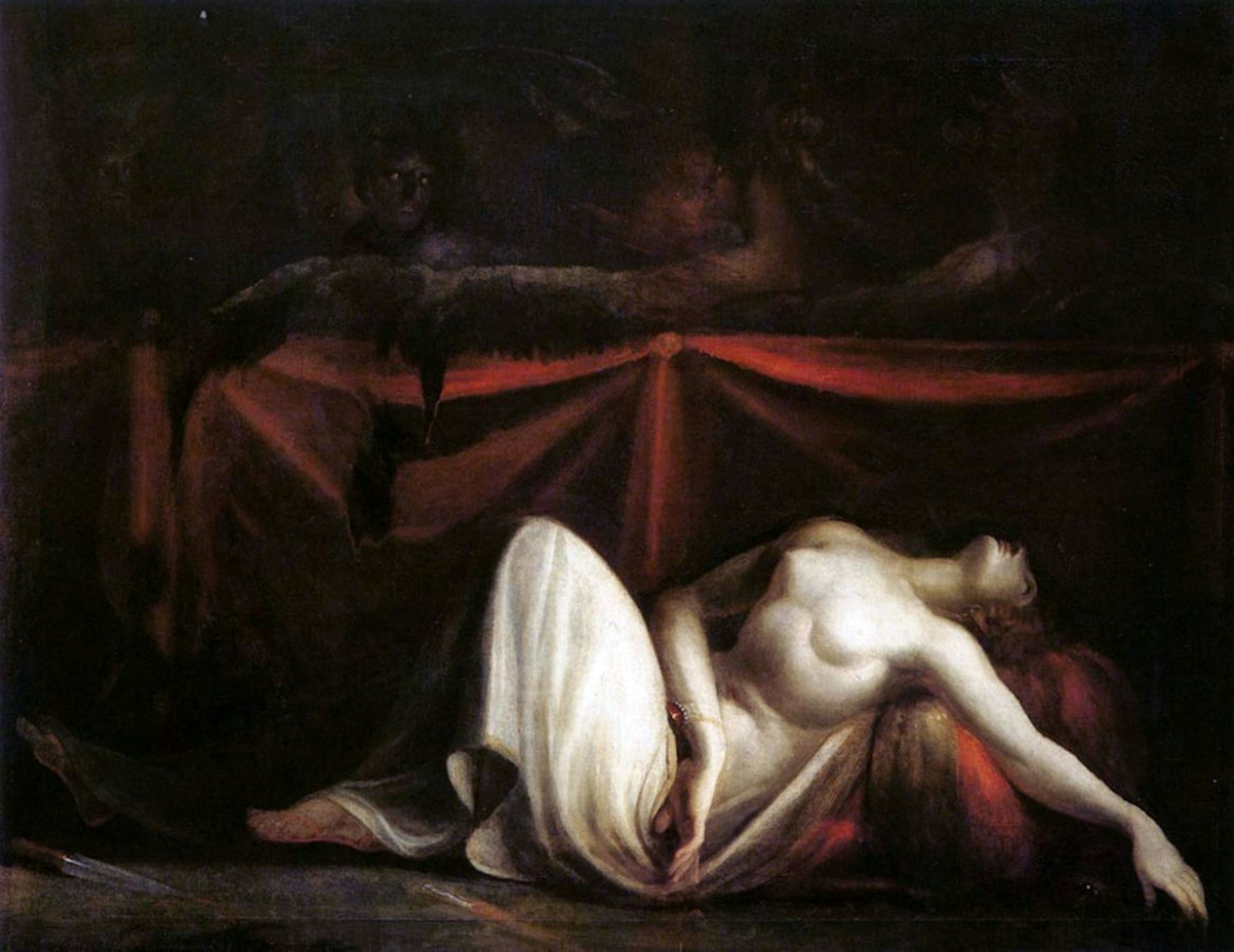
The Erinyes Drive Alcmaeon from the Corpse of his Mother, Eriphyle, Whom He Has Killed by Henry Fuseli (1821). Kunsthaus, Zurich, Switzerland.
Wikimedia CommonsPublic DomainEventually, Alcmaeon asked the oracle of Delphi what he needed to do to atone for his sin and free himself of the Erinyes. He was instructed to settle a land that did not yet exist at the time of his mother’s murder. Alcmaeon wandered the world until he found a delta by the Achelous River that had just been formed. There he made his new home and took a wife (though he was killed not much later).[33]
Orestes
Orestes was the son of Agamemnon, the commander-in-chief of the Greek force that conquered Troy. When Agamemnon at last returned from the Trojan War, he was murdered by his wife Clytemnestra and her lover Aegisthus. Years later, when Orestes was fully grown, he avenged his father by killing both Clytemnestra and Aegisthus.
The Erinyes punished Orestes for his matricide just as they had punished Alcmaeon. He was driven mad, constantly haunted by the shade of the mother he had murdered in cold blood. In what eventually became the common tradition, Orestes ended up in Athens. There, he was purified by Apollo and Athena and acquitted of his crime in the first-ever murder trial. This trial was dramatized in Aeschylus’ tragedy the Eumenides (fifth century BCE), in which Apollo and Athena defend the haggard Orestes against the prosecuting Erinyes.[34]
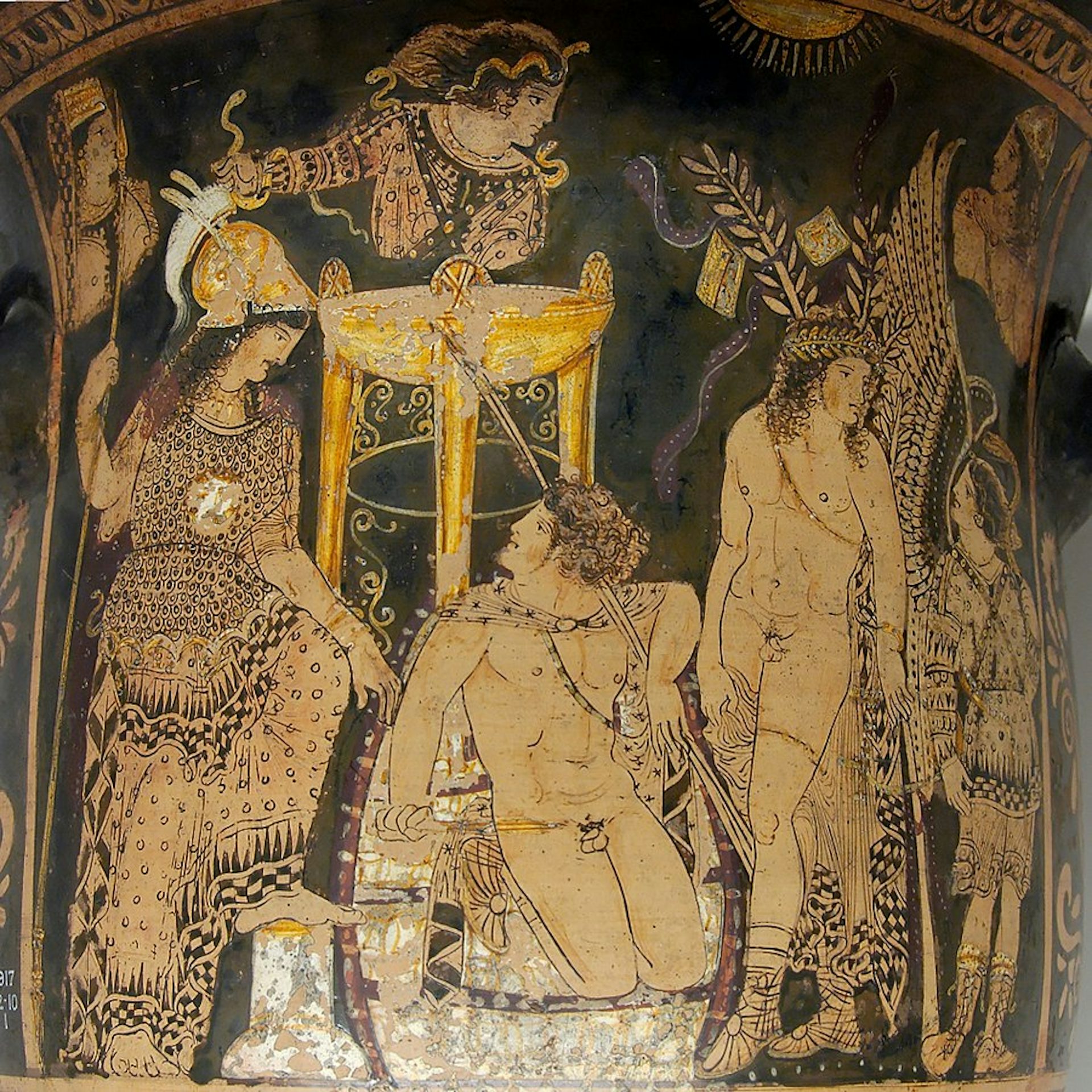
Paestan red-figure bell-krater showing Orestes (center) purified at Delphi by Athena (left) and Apollo (right) while the Erinyes stand nearby (far right, top center). Attributed to Python, ca. 330 BCE. British Museum, London, UK.
JastrowPublic DomainOther Sinners
The Erinyes can be found “behind-the-scenes” in numerous myths besides those of Alcmaeon and Orestes.
When the hero Meleager killed his uncles, for example—the brothers of his mother Aethra—it was to the Erinyes that Aethra prayed for vengeance.[35]
When Medea ran off with Jason and killed her brother Apsyrtus in order to slow down her father’s pursuit, she was tormented by the Erinyes until she was purified by her aunt Circe. But in some traditions, Apsyrtus’ Erinyes eventually had their revenge, causing Jason to betray Medea and ultimately leading Medea to kill her own children in an attempt to hurt him.[36]
The Erinyes also played a role in the myth of Oedipus. They first entered the scene when Oedipus killed his father (without knowing who he was) and married his mother (also without knowing who she was). Eventually, after the truth was revealed and Oedipus was ruined, he sent the Erinyes against his own sons Eteocles and Polyneices as punishment for dishonoring him. In the end, the Erinyes brought the whole affair to a sad and bloody end, with Oedipus in exile, his mother dead, and his sons killed at each others’ hands.[37]
Worship
Temples
The Erinyes had a few sanctuaries in the region of Attica. In Athens, there was a temple of the Erinyes in a grotto near the Areopagus, where they were known as the Semnae or Semnae Theai (“august goddesses”). This was close to the spot where the Athenians tried murder cases. It was traditional for defendants who had been acquitted of murder to leave offerings for the Erinyes at their temple.[39]
There was also a sanctuary of the Erinyes (as the Eumenides) at Colonus, an Attic town not far from Athens. At the center of the sanctuary sat a sacred grove that nobody was allowed to enter.[40]
The Erinyes also had temples at Sicyon[41] and Ceryneia[42] (where they were called the Eumenides) and at Erythrae[43] (where they were known as the Ablabiae). At their temple in Arcadia, they were identified with the agricultural goddess Demeter.[44] They may have also been identified with the Maniae (“Madnesses”) at their temple in Megalopolis (though linking the Erinyes to a negative personification would break the pattern of euphemistic religious titles).[45]
Festivals
Festivals in honor of the Erinyes, sometimes called Eumenideia, were celebrated in several Greek cities, including Athens and Sicyon. These festivals usually involved animal sacrifices (sometimes pregnant victims were specifically chosen), nephalia, and flower garlands.[46]
Pop Culture
The Erinyes (whether known as the Furies, the Eumenides, or simply the Erinyes) continue to make appearances in modern pop culture.
In literature, they have featured in T. S. Eliot’s play The Family Reunion (1939), Rick Riordan’s Percy Jackson and the Olympians series (2005–2009), and Neil Gaiman’s graphic novel series The Sandman (1989–). The mythology of the Erinyes, especially as portrayed in Aeschylus’ Eumenides, has also inspired novels by Anthony Powell and Jonathan Littell.
The Erinyes can also be found in visual media. For example, they appeared in the 1990s TV series Xena: Warrior Princess, where they were portrayed rather un-classically as three alluring and scantily clad sisters. More recently, the Furies popped up as characters in the 2020 video game Hades.